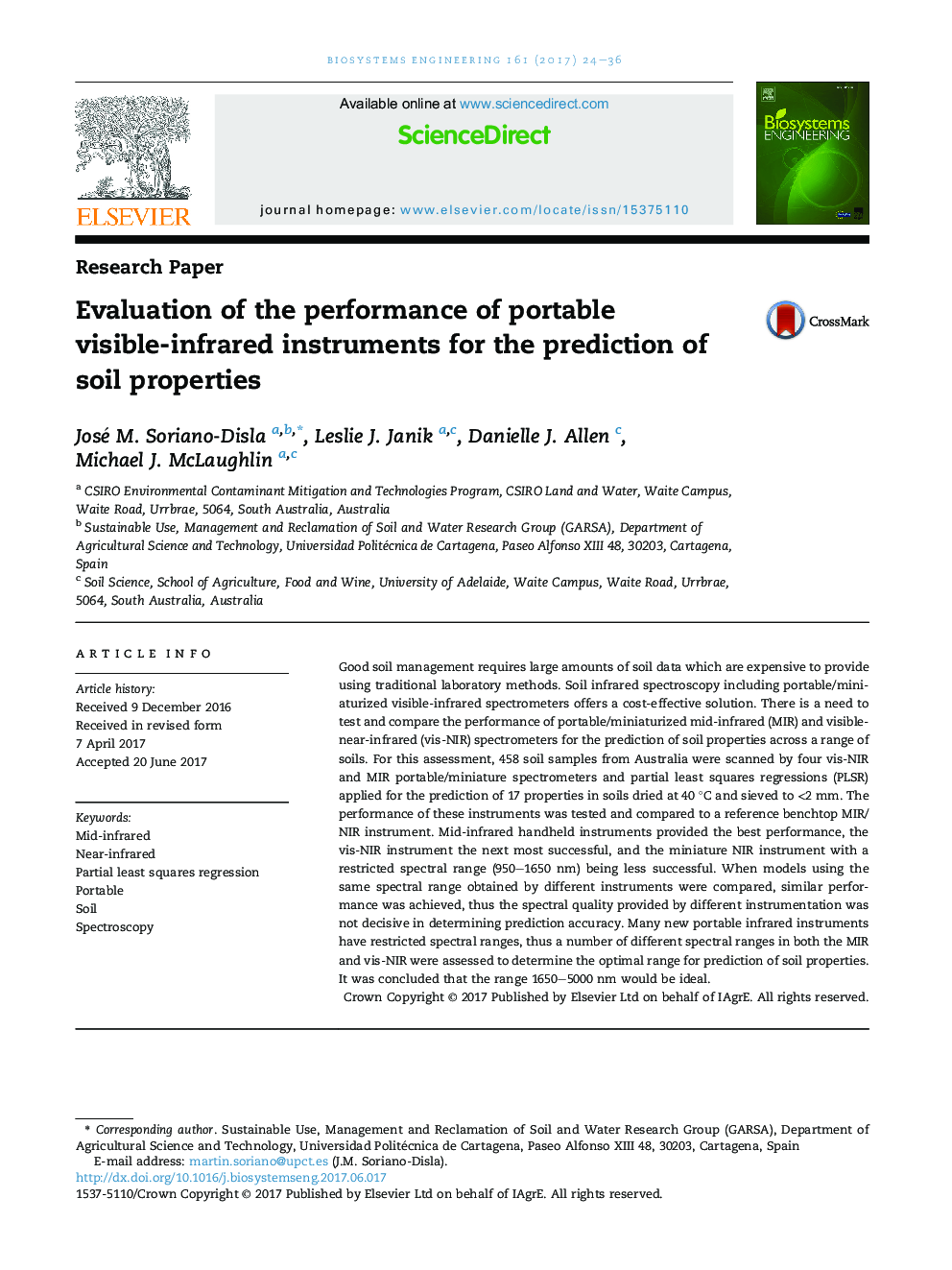| Article ID | Journal | Published Year | Pages | File Type |
|---|---|---|---|---|
| 5471792 | Biosystems Engineering | 2017 | 13 Pages |
Abstract
Good soil management requires large amounts of soil data which are expensive to provide using traditional laboratory methods. Soil infrared spectroscopy including portable/miniaturized visible-infrared spectrometers offers a cost-effective solution. There is a need to test and compare the performance of portable/miniaturized mid-infrared (MIR) and visible-near-infrared (vis-NIR) spectrometers for the prediction of soil properties across a range of soils. For this assessment, 458 soil samples from Australia were scanned by four vis-NIR and MIR portable/miniature spectrometers and partial least squares regressions (PLSR) applied for the prediction of 17 properties in soils dried at 40 °C and sieved to <2 mm. The performance of these instruments was tested and compared to a reference benchtop MIR/NIR instrument. Mid-infrared handheld instruments provided the best performance, the vis-NIR instrument the next most successful, and the miniature NIR instrument with a restricted spectral range (950-1650 nm) being less successful. When models using the same spectral range obtained by different instruments were compared, similar performance was achieved, thus the spectral quality provided by different instrumentation was not decisive in determining prediction accuracy. Many new portable infrared instruments have restricted spectral ranges, thus a number of different spectral ranges in both the MIR and vis-NIR were assessed to determine the optimal range for prediction of soil properties. It was concluded that the range 1650-5000 nm would be ideal.
Related Topics
Physical Sciences and Engineering
Engineering
Control and Systems Engineering
Authors
José M. Soriano-Disla, Leslie J. Janik, Danielle J. Allen, Michael J. McLaughlin,
